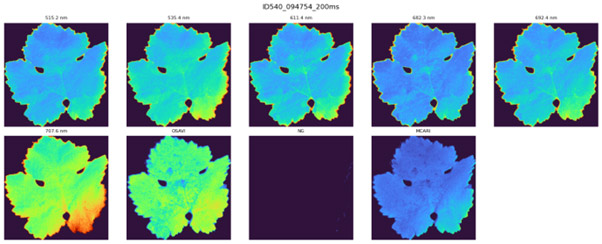Plant decision support via spectral imaging
This project develops an end-to-end workflow for early virus detection in plants using hyperspectral imaging (HSI) and a compact representation that combines selected wavelengths with a small set of vegetation indices (VIs). The representation is designed to retain physiologically informative signals while reducing redundancy, consequently improving computational efficiency and interpretability. The model design follows a lightweight three-dimensional architecture with dual pathways and attention mechanisms, expressed here at a high level to protect implementation details.
The project delivers a practical early-detection workflow that combines hyperspectral cues with a compact feature design and a lightweight 3D classifier. The validated gains in accuracy and AUROC, together with a disciplined evaluation protocol, indicate readiness for scaled trials and technology transfer.
